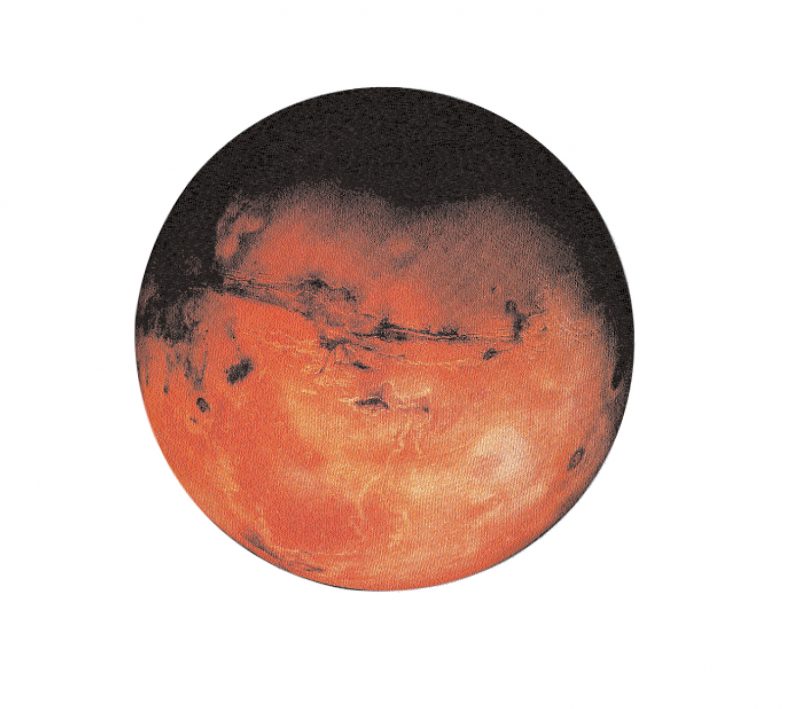On August 27th Mars veered closer to Earth than it has, or will again, for 66,000 years. The glittering, reddish-orange planet is still the brightest natural object in the early evening sky, but for two late summer weeks an astounding number of conversations were peppered with talk of Mars: Its proximity (34,646,416 miles/55,758 km from earth); its size (at its zenith, Mars appeared as 25.11 arc seconds wide with a magnitude of –2.9); and how angry and agitated the red planet was making everyone they knew (no scientific data available).
Mars is nearly always visible, though it usually appears as a medium-sized star. And except when it’s so close you can’t miss it, Mars isn’t something the general population talks or thinks about with regularity. But for science fiction aficionados, Mars is the brightest light source, the point of origin, the symbolic and literal bedrock of a belief in extraterrestrial life.
The idea of intelligent life on Mars began with a mistranslation. In 1877, Italian astronomer Giovanni Sciaparelli observed large canali (channels) on Mars’ surface that suggested a history of flowing water, and with water, the possibility of life. Canali was promptly mistranslated into English as “canals,” and, as the Suez Canal, a marvel of technology, had been completed in 1869 it was not unimaginable that intelligent beings had designed and constructed the “canals” of Mars.
Just as the 1872 publication of Darwin’s Origin of the Species offered a scientific and intellectual alternative to those who no longer believed in the creation myth, the discovery of Mars’ channels/canals offered a similar confirmation to a community who had always suspected they were not alone in the universe.
In 1888 Kurd Lasswitz wrote about Mars in Two Planets, arguably the first book of the sci-fi genre. Since then 352 books have been written (for adults, in English) about Martians; thirty of them were published in 2003.
The first major work to explore the concept of the extraterrestrial invader was H.G. Wells’s 1897 War of the Worlds, which dealt with ideas dear to Wells’s nineteenth-century mind, centrally, Darwinism and the triumph of biological selection, and the nasty side effects of the Industrial Age: slums, weapons of war, and the abuse of power. As kind of sequel, Garrett P. Serviss followed with Edison’s Conquest of Mars (1898), capitalizing on the public’s fascination with Martians and with the inventions of Thomas Edison, who apparently agreed to be fictionalized as the book’s hero.
The visual representation of the Martian is so deeply rooted in our consciousness that locating the exact moment we first considered him—whether in books or comic strips or cartoons—is extremely difficult. The well-worn phrase “little green men” likely came from Edgar Rice Burroughs’s A Princess on Mars (1912), and though Burroughs’s actual phrase was the “green men of Mars,” perhaps the notion of a technologically advanced but diminutive race was less threatening than one of hyper-intelligent, physically superior beings.
The heavens have ever...
You have reached your article limit
Sign up for a digital subscription and continue reading all new issues, plus our entire archives, for just $1.50/month.
Already a subscriber? Sign in





